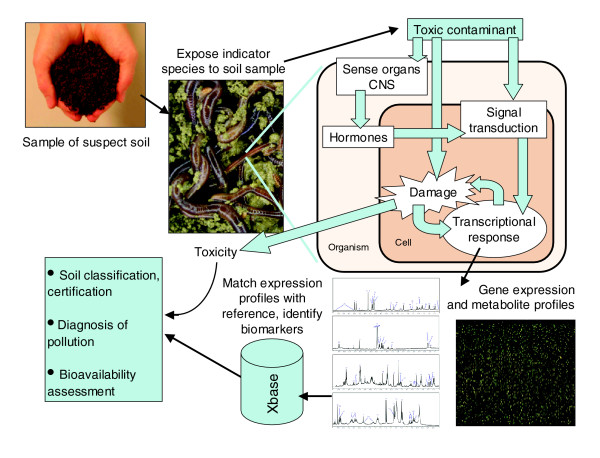Figure 1.
How a combination of genomics and environmental toxicology can support risk assessment of soil pollution. An indicator species is exposed to a sample of soil. Traditional soil assessment evaluates soils only on the basis of whole-body endpoints, such as survival, growth and reproduction. Genomic analysis can add specificity, sensitivity and rapidity, as discussed in the text, and can give more detail of how the contaminants in the soil affect cellular processes such as signal transduction or DNA damage. In addition, consideration of metabolite patterns (such as the graphs at the bottom of the figure) can help with the sifting and interpretation of the transcriptional response, as illustrated by recent work on earthworms [10-13]. 'Xbase' refers to bioinformatic analyses.

